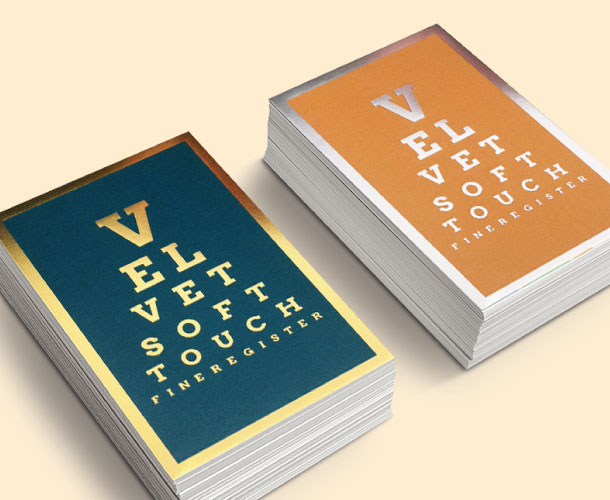
The Art of Foil Stamping
Whether it’s that gorgeous wedding invite or the shimmering effect on high-end packaging, foil stamping elevates print to another level. It adds sophistication, texture and a distinct sense of quality like no other technique.
But what goes into creating those luminous details? Let’s explore the craft behind foil stamping, from how it works to the materials used and the many ways it can be applied.
An Introduction to Foil Stamping
Foil stamping, also called foil printing or hot foil stamping, is a relief printing technique that combines heat, pressure, and metallic foil to create unique designs primarily on paper (but also on some other materials).
The basic process is this: a heated, custom-made die is used to press foil directly onto a surface, causing the material’s head to adhere to the paper. You will undoubtedly recognise this from historical documents from the Middle Ages (or fairy tales, which used these as inspiration!), where this technique was extensively used for manuscripts.
Unlike traditional printing processes, foil stamping does not use liquid in any form. Instead, the process transfers a very thin layer of foil to the material, which creates that glossy impression that feels high-end and special.
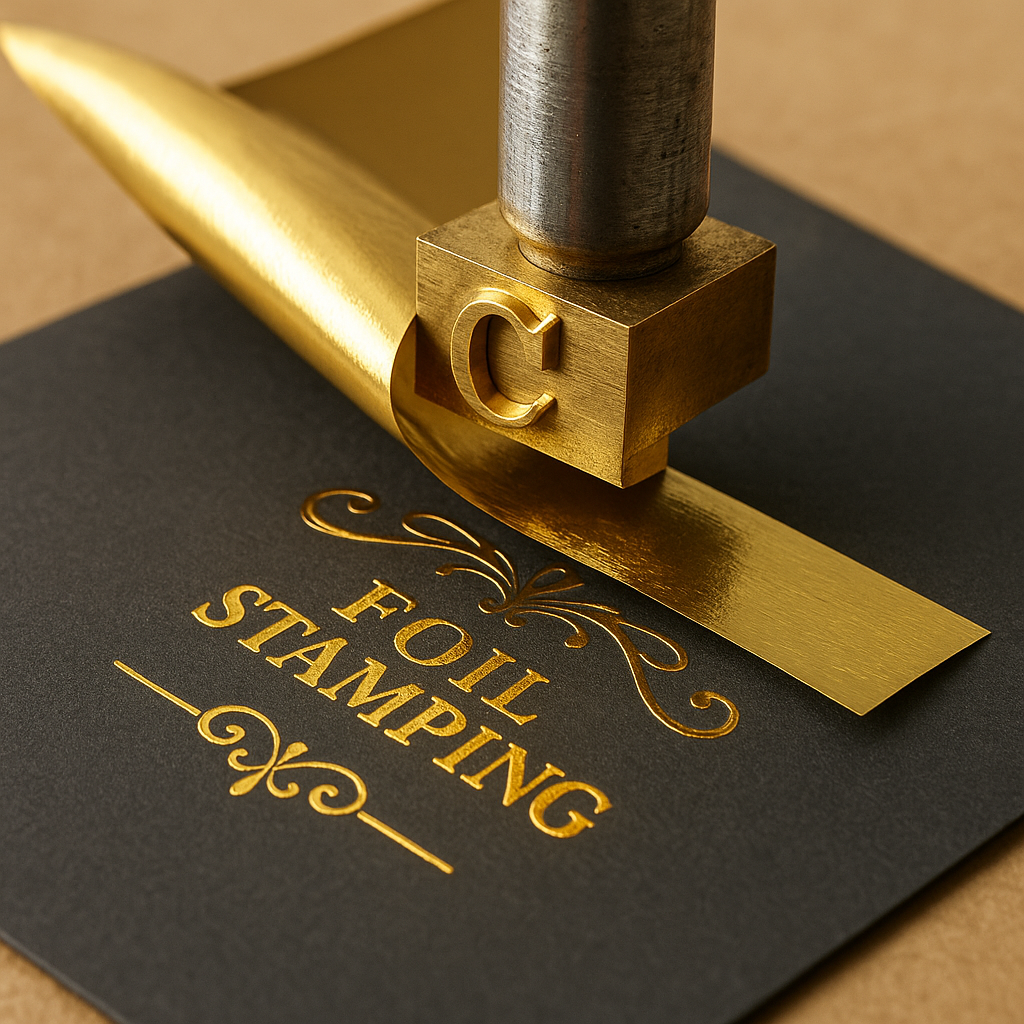
Why Foil Stamping?
Regular printing methods are generally cheaper and have a faster turnaround (from start to finish). The other interesting aspect of foil stamping is that it is not offered by all print companies. So what’s so special about foil stamping, and why is it worth considering? Foil stamping:
- Elevates your brand, giving that extra layer of quality, with the popular metallic option oozing luxury.
- Tactile and memorable. Research shows that tactile materials create a far stronger impression, with texture making the design touchable, not just visible.
- Adds contrast and ‘pops’ off the page, working well in conjunction with darker papers, standing out far more clearly than standard ink options.
- It’s versatile. We tend to think of the metallic shine of gold or silver stamping as the only options, but foil stamping is very versatile and has many distinct use cases.
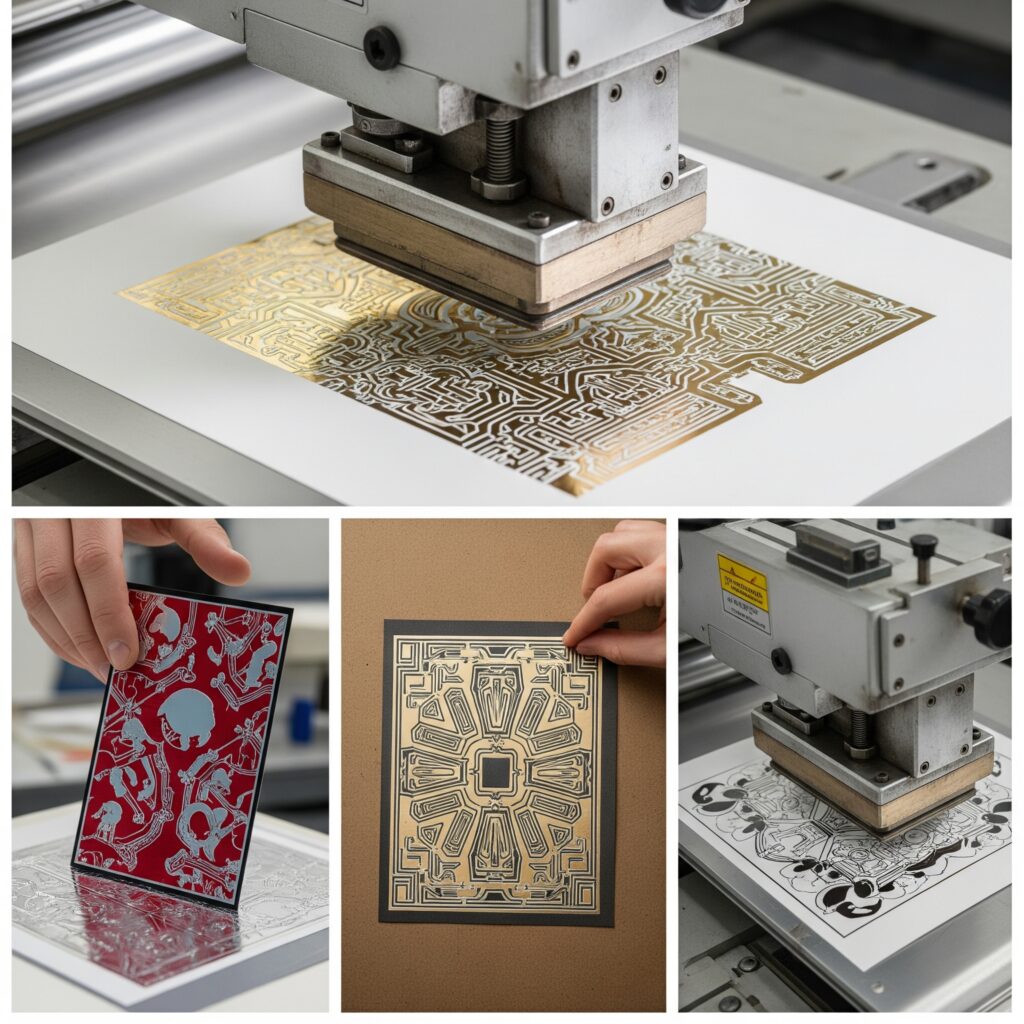
Types of Foils Available
Foil stamping is primarily known for its metallic gold look, but there is a wide range of materials and styles available on the market:
Metallic Foils. The classic and go-to choice for most people, metallic foils catch the light and create that attractive hue, and are often used for posh invitations, university diplomas and luxury-style branding. Think gold, silver, copper and rose gold for the colours used.
Pigment Foils. Pigment foils offer a solid colour alternative to the metallic options (e.g. blues, reds, and greens are the most popular). They don’t have the glossy shimmer you find with metallic foils, but instead, you get a clean and rich aesthetic that comes either with a glossy or matte finish.
Holographic Foils. Multi-dimensional, rainbow-like effects, just like the special insert cards from your favourite childhood hobby. They’re not just ideal for collectibles, but also for packaging and promotions that are designed to be attention-grabbing.
Specialty Foils that are not quite as common but are still popular and include pearlescent foils, more subtle in their shimmer, offering soft tones that are ideal for elegant branding that’s a little more understated. You also have clear or transparent foil that gives paper that ‘watermark’ effect, often implemented with anti-counterfeiting properties.
Eco-friendly Foils. Foils that are green are becoming increasingly available, with consumers now putting the environment nearer the top of the priority list.
Foil Stamping Use Cases
Because of its versatility, foil stamping is a widely used technique. Some of the most common use cases include:
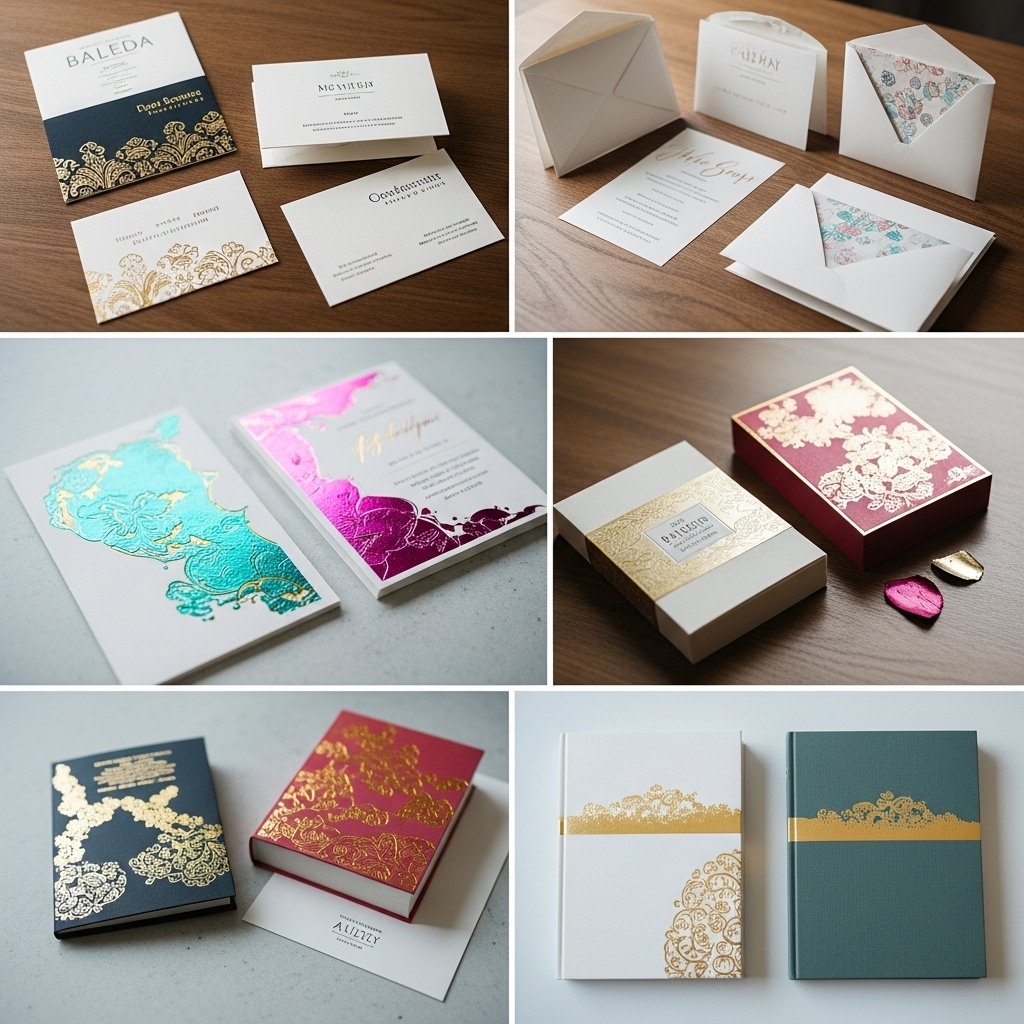
- Luxury packaging. Think perfumes, cosmetics, boutique product boxes and wine labels. Next time you go to the shops, have a look at the more expensive wines. Notice the foil stamping!
- Wedding and event stationery. Email invites are becoming more common these days, but nothing beats an invite received in the post, especially when it has that beautiful gold foil stamping.
- Book covers and spines. Foil stamping adds that extra sense of quality and permanence to books. Expensive hardbacks often use the technique, for example.
Best Materials for Foil Stamping
Foil stamping can be done on many different types of materials, but work best on:
- Cardstock. Usually used for invites, postcards, or business cards and the like, with matte and glossy finishes working very well with cardstock.
- Textured paper gives an additional tactile interest to the material, enhancing that extra luxurious feel you’re looking for.
- Leather and faux leather. Think personalised bags with initials, diaries with a leather cover, or any other gift item made of leather.
- Plastic or PVC is often used for foil stamping, in products such as loyalty cards or custom ID tags/cards, for example
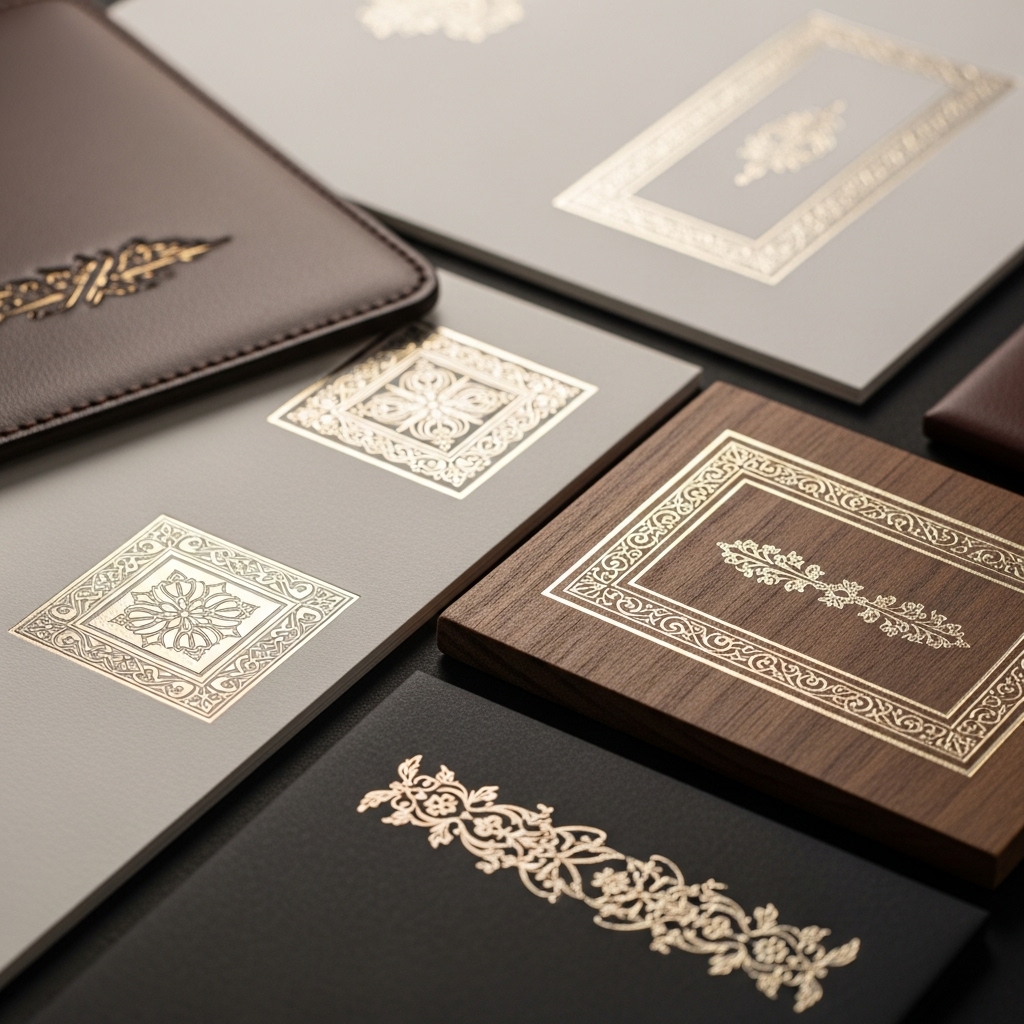
Tips for Optimal Foil Stamping Designs
Planning on using foil stamping for your project? These tips will help you achieve optimal results:
- Don’t overdo it. Stick to simple designs that are bold and nothing too intricate. Fine lines can get lost or misaligned in the stamping process.
- Use vector graphics. Ensure you save your designs in a file format that supports vector scaling, which will give you the crisp die cuts you want in the final product.
- Pay attention to contrast. The foil interacts with other materials; it doesn’t stand alone. Pay attention to background colour, texture, and whether you have a design that complements the whole.
- Test your materials before committing to a big run, especially if you are using a combination of techniques and/or unconventional materials. The result can differ from expectations, and you don’t want an expensive, unusable product!
Foil stamping isn’t just a shiny finish to a print run, it’s a design statement in its own right that has timeless appeal. Whether you’re going for subtly refined, classy wedding invitations or flashy marketing material, foil stamping has many use cases and is a technique that can substantially boost visual appeal.

If you’re aiming to leave a lasting impression, foil stamping is an excellent option. Of course, a knowledge of the tools and materials involved, as well as an eye for design, is paramount to a successful print project.

